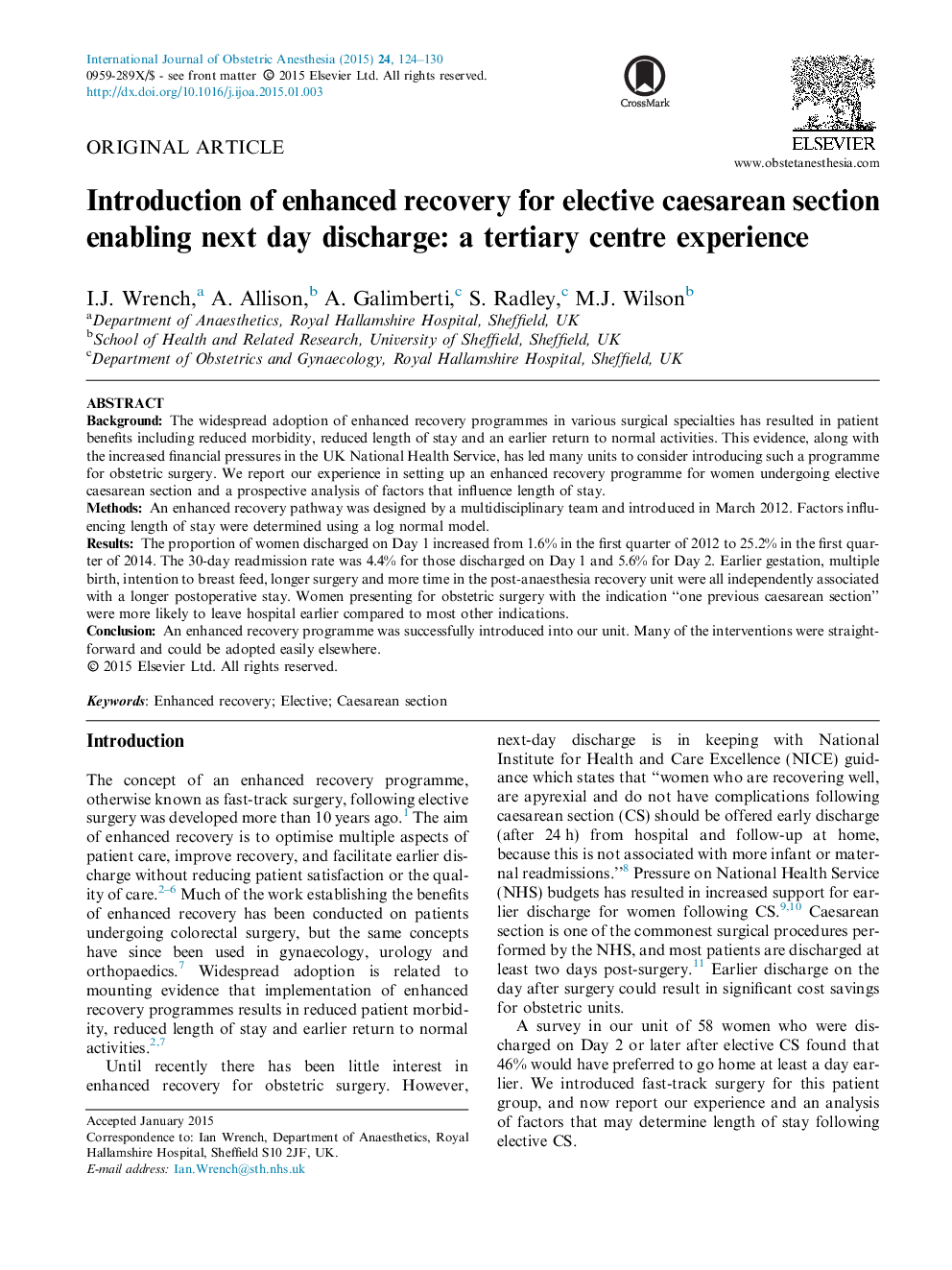| Article ID | Journal | Published Year | Pages | File Type |
|---|---|---|---|---|
| 2757581 | International Journal of Obstetric Anesthesia | 2015 | 7 Pages |
•We introduced an enhanced recovery programme for elective caesarean section to our unit.•We used simple, easily generalisable interventions.•The proportion of women going home the day after surgery increased from 1.6% to 25.2%.•The readmission rates for women leaving on days one and two were similar.•Length of stay was influenced by multiple birth, breast feeding, times for surgery and recovery and indication for surgery.
BackgroundThe widespread adoption of enhanced recovery programmes in various surgical specialties has resulted in patient benefits including reduced morbidity, reduced length of stay and an earlier return to normal activities. This evidence, along with the increased financial pressures in the UK National Health Service, has led many units to consider introducing such a programme for obstetric surgery. We report our experience in setting up an enhanced recovery programme for women undergoing elective caesarean section and a prospective analysis of factors that influence length of stay.MethodsAn enhanced recovery pathway was designed by a multidisciplinary team and introduced in March 2012. Factors influencing length of stay were determined using a log normal model.ResultsThe proportion of women discharged on Day 1 increased from 1.6% in the first quarter of 2012 to 25.2% in the first quarter of 2014. The 30-day readmission rate was 4.4% for those discharged on Day 1 and 5.6% for Day 2. Earlier gestation, multiple birth, intention to breast feed, longer surgery and more time in the post-anaesthesia recovery unit were all independently associated with a longer postoperative stay. Women presenting for obstetric surgery with the indication “one previous caesarean section” were more likely to leave hospital earlier compared to most other indications.ConclusionAn enhanced recovery programme was successfully introduced into our unit. Many of the interventions were straightforward and could be adopted easily elsewhere.
